Owning a freshwater aquarium means you have to deal with the presence of algae more often than you might enjoy. The good news is there are species of hungry creatures called algae eaters that can help you get rid of algae, remove cloudiness caused by algae and maintain the health of your aquarium.
This article will explain what algae eaters are, things to consider when choosing for your freshwater aquarium, and some of the benefits you enjoy from having algae eaters. Keep reading to explore some of the best algae eaters for freshwater aquariums or aquascapes.
What are algae eaters?
“Algae eaters” is a term used to describe species of organisms that feed on algae as part of their natural diet. These species can be fish, snails, shrimps or critters that are either selective of the kinds of algae they consume or feed on multiple types of algae.
Algae Eaters exist in a variety of sizes and algae-eating efficiency. Some might even feed on aquarium plants, so you need to be sure of their behavior before choosing any algae eaters.
Factors to consider when choosing algae eaters for a freshwater aquarium
Algae management is not a one-size-fits-all approach. The conditions in one aquarium might completely differ from the next, and directly influence the decision you make about algae eaters. Here are some of the things to consider before getting algae eaters for your aquarium.
- The kind of algae you’re dealing with should determine the kinds of algae eaters you’ll introduce to your aquarium. You could have brown algae, green algae, blue green algae or other algae types. If you’re certain of the type, then you should find algae eaters specific for that type. If not, your focus should be on algae eaters with a wider preference of food choices.
- Your tank conditions are also important in selecting algae eaters. Things like oxygenation levels, speed of water current, density of foliage, and activities of existing tank mates should be top of mind to ensure that your selected algae eaters will thrive in that condition.
- The overall survival requirement of the algae eaters also comes into play. Unless your aquarium produces massive amounts of algae, you might need to supply the algae eaters with other sources of food to ensure longevity and get the best out of them.
With these factors in mind, let’s explore the 30 best algae eaters for a freshwater aquarium, including the best species of fish, snails and shrimp.
1. Bristlenose Plecostomus (Bristlenose plecos)
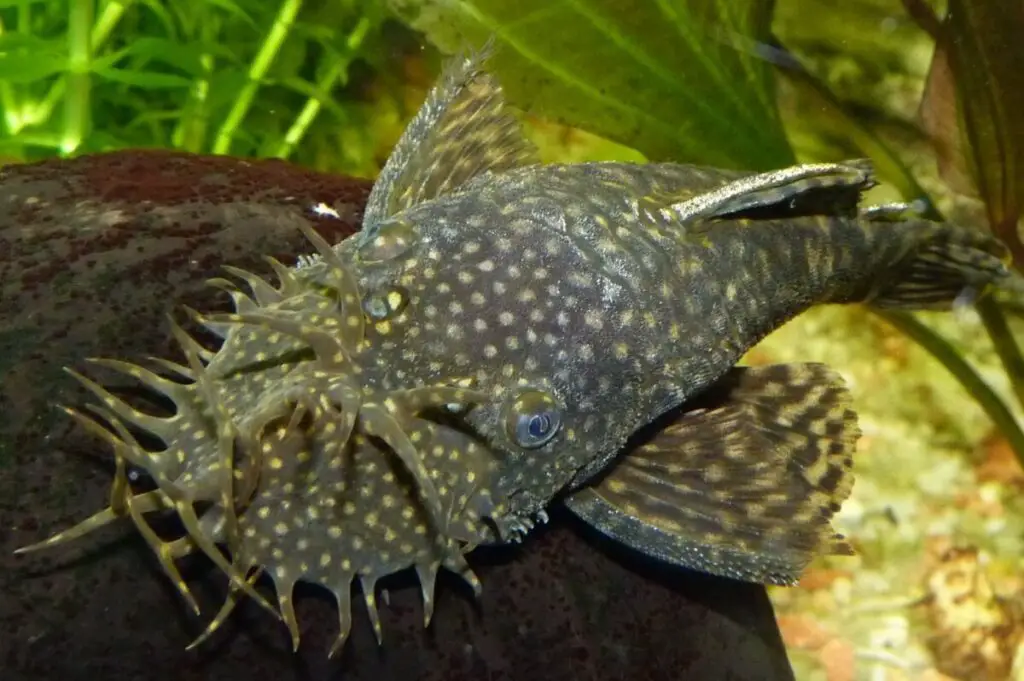
Bristlenose plecos are one of the most common algae eaters you’ll encounter. The preference for this group of algae eaters is because of their relatively small sizes (usually doesn’t exceed five inches), their hardy and docile nature, and large appetite. Their small size makes them suitable algae eaters for aquariums of small sizes like 20 gallons. Their huge appetites mean you have to supplement the algae with algae wafers or other alternatives to provide them with adequate nutrition. Their hardy nature gives them the advantage of surviving in a range of temperatures from about 60°F to 80°F. They also require a neutral pH of the water to stay healthy. The docile nature means they can live peacefully with other occupants of the aquarium, if there’s any.
The bristlenose plecos are a good choice if you have a variety of algae growing in your freshwater aquarium.
2. Siamese Algae Eater (Crossocheilus oblongus)
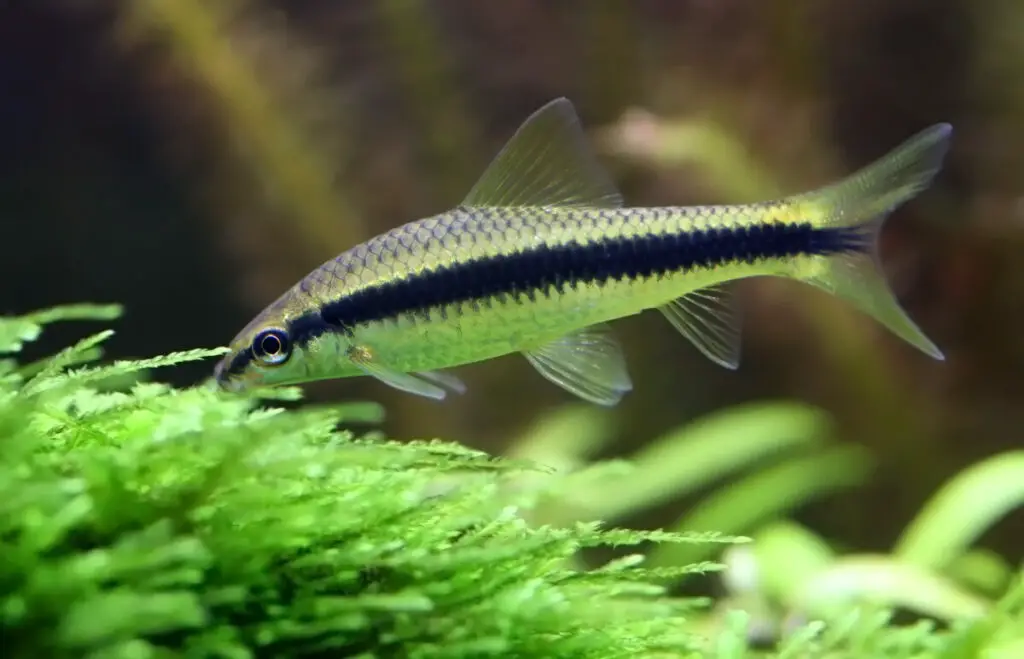
The Siamese algae eater is one of the best algae eaters on this list. They have a mild temperament and an undeniable appetite for algae which makes them suitable for peaceful cohabitation while still doing their job. They have a wide range of algal preferences and even eat one of the most ignored species by other algae eaters. They enjoy black algae and hair algae more than other species. They are also a perfect choice for planted aquariums due to their ability to clear out algae without causing any damages to the plants. It’s probably more effective to have at least two of these in your aquarium for better and cleaner water. They are about 6 inches after full growth with translucent fins and straight black stripes extending from the tail to the tip of the nose. They’ll also help control flatworms and detritus in the aquarium.
If you have a problem of black or hair algae in an aquarium of size 20 gallons or more, get this algae eater.
3. Otocinclus Catfish (Otocinclus arnoldi)
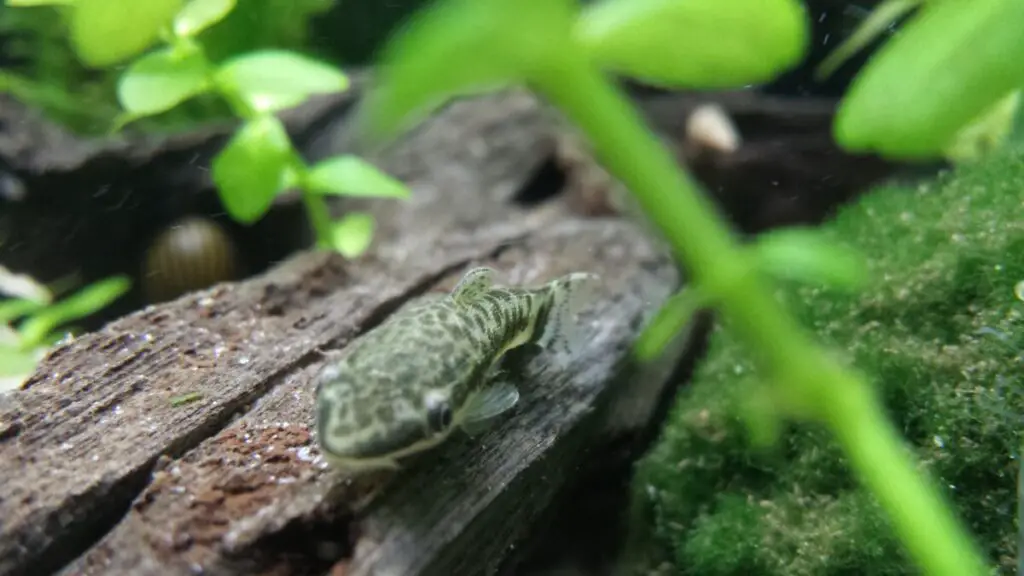
This is one of the smallest algae eaters on this list, with a maximum length of only two inches. They are peaceful species of fish that survive well in community tanks and are easy to care for. They are most effective in schools, so a tank of about 30 gallons and above will be ideal for the otocinclus catfish. You can also use it for nano tanks but in this case, in a group of three to five. They are particularly good at getting rid of brown algae and diatoms before it becomes a noticeable problem because they can reach corners and spots that other algae eaters wouldn’t fit into. It also helps that algae is their primary source of nutrient so they might not need any supplement. They are also suitable for planted aquariums since they don’t damage the plants. Basically otocinclus catfish are great for about any aquarium size and style.
4. Chinese Algae Eater (Gyrinocheilus aymonieri)

Chinese algae eaters are common algae eaters that are quite effective but have a few limitations. First, they tend to only eat algae if there are no other options. They are somewhat aggressive and therefore wouldn’t be ideal in a community aquarium especially with other smaller fishes or shrimps species. They can get as big as eight to ten inches long and are better suited for tanks of 30 gallons and above. They prefer an environment with warm temperature and may require a diet supplement, but only in small quantities.
Chinese algae eaters are the best algae eaters for a freshwater aquarium with a rowdy or semi-aggressive population, for instance, cichlids.
5. American Flagfish or Florida Flagfish (Jordanella floridae)
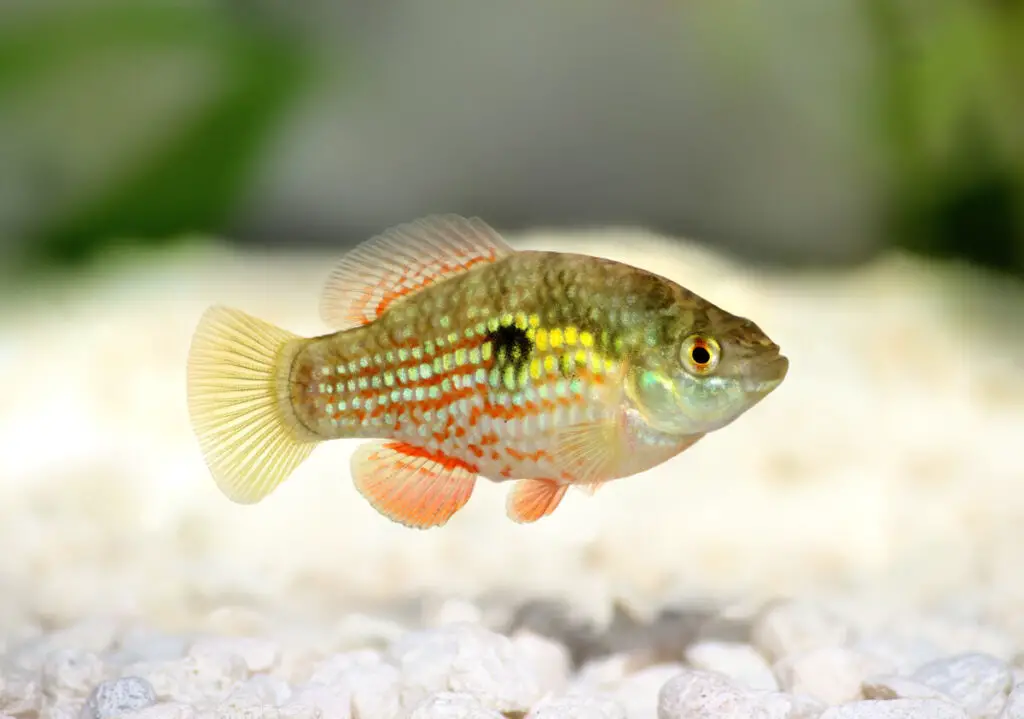
The Florida flagfish has beautiful red stripes and shoulder patches of blue and red that look like the flag of the United States. They have a size of less than three inches and are voracious eaters with the right mouth structure for hair algae and other algae with similar structure. They are not suitable for planted aquariums because they can damage some delicate leaves during the algae-eating process. They survive well in unheated tanks and may be good for cold weather. These fish are omnivorous in nature and would require a diet supplement of standard fish flakes and other food substances. This also contributes to why it’s unsuitable for planted aquariums.
6. Molly fish (Poecilia sphenops)

Mollies are a group of livebearers that have flat jaws and bottomless stomachs, and are always ready to pick out algae from any surface, including plants. They exist in a variety of colors, body patterns and shapes, with sizes ranging from two to six inches. They live well in groups of other species and can serve for a tank of 20 gallons and above. Also, their nutrition isn’t exclusive to algae so you would need to supplement with other fish food options.
Mollies require a little extra attention in freshwater aquariums to ensure that the environment is suitable for their health and to decide if you need to add some aquarium salt or extra minerals to aid their survival since some of them are bred in brackish water. Ensure that other species in your aquarium can survive in saltwater before getting a Molly fish to solve your algae problem. Mollies also reproduce quite rapidly. Therefore, pay attention to your tank size and be sure that it can accommodate newer species for a certain period of time.
7. Rosy barb (Pethia conchonius)
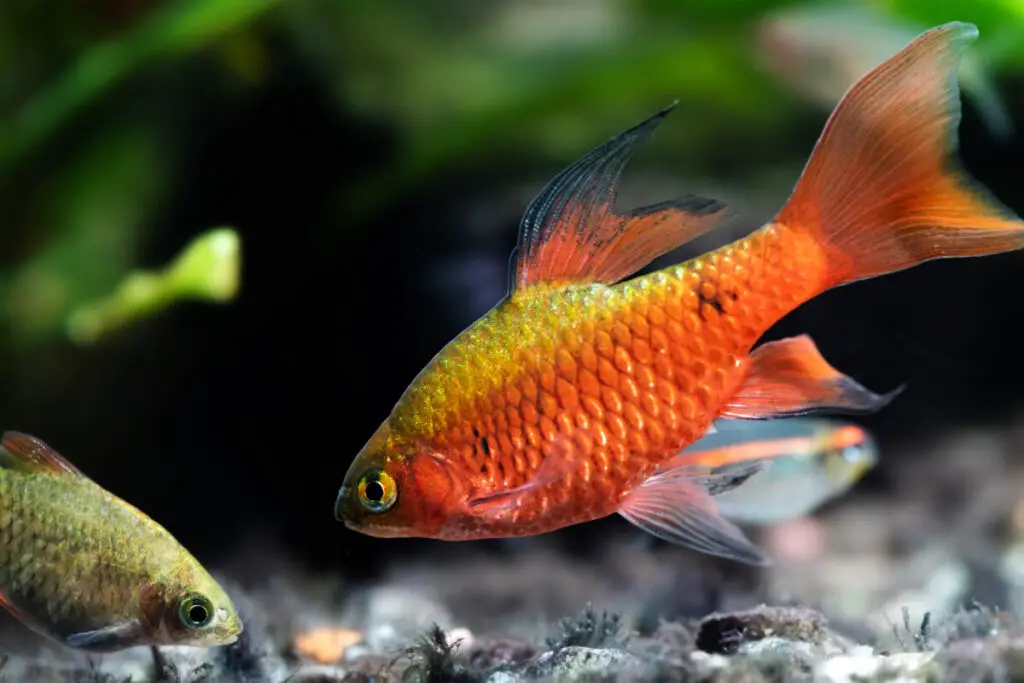
Rosy barbs have modified mouth structure similar to flagfish that make them perfect for clearing out hair algae, thread algae and staghorn algae. They are calm species with a maximum size of three inches. They can also be kept in unheated aquariums. They are ideal for tanks above 25 gallon size and are better bred in groups to reduce tendency for aggressiveness.
8. Sturisoma panamense (Whiptail catfish)
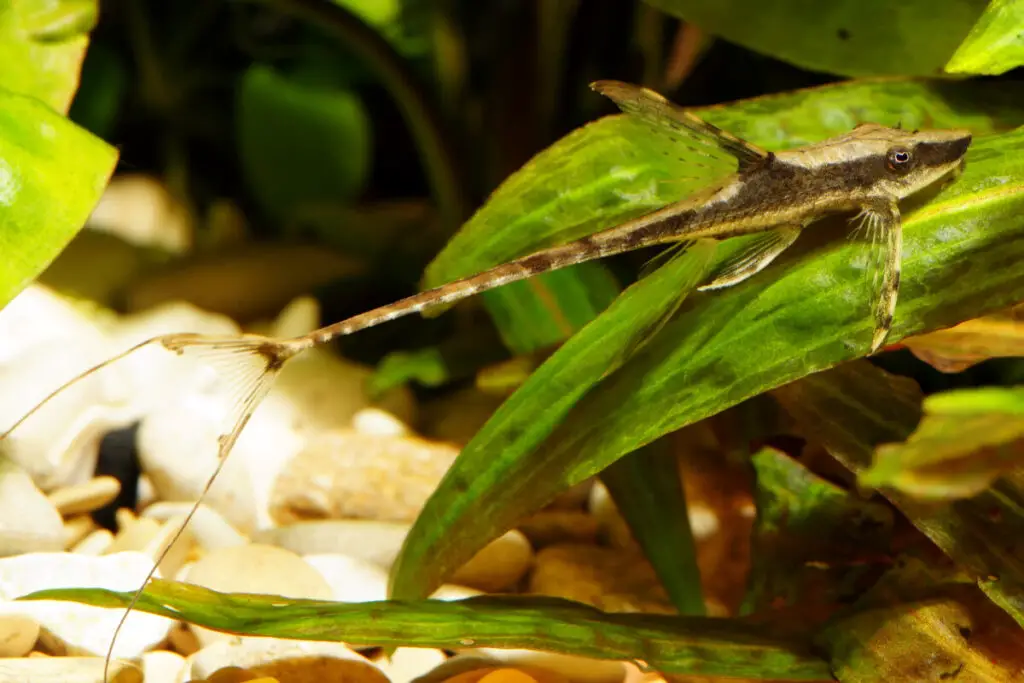
Sturisoma panamense is a crazy looking species of whiptail catfish. Adults can reach about 8 inches in size. They are peaceful creatures and omnivorous in nature. So they feed on algae as well as other materials like uneaten detritus, frozen foods and sometimes live foods that are rich in protein. They don’t survive very well in poorly circulated water, warmer environments (70° to 75°F is optimal), and they require a neutral pH and soft to moderately hard water conditions. They have armor-like body scales that serve as a protection, especially against slightly aggressive tankmates.
9. Twig catfish (Rineloricaria lanceolata)
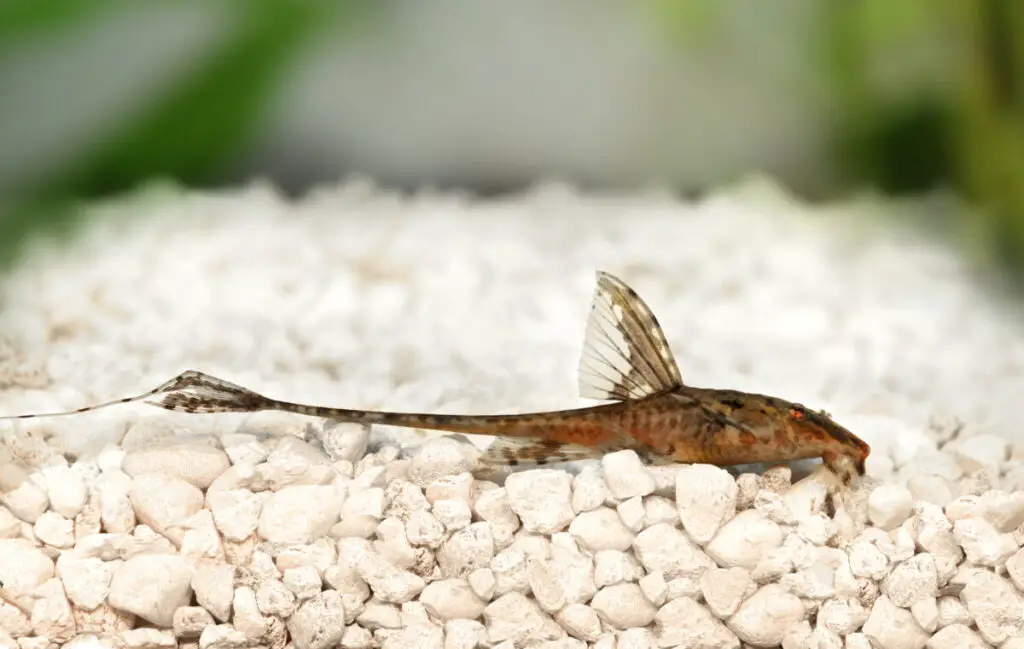
The twig catfish, Rineloricaria lanceolata, is a small species of Whiptail catfish that have long bodies and can grow up to four inches long. These fish use their mouth and pectoral fins to ‘walk’ their way around the tank. They feed on an assortment of algae but have shown great results for green algae. They can be used to manage algal growth in aquariums as small as 12 gallons, as well as larger ones when kept in pairs. They are one of the best algae eaters that require attentive care. They need high oxygen levels, high water quality and an adequate amount of current to survive for a long time. Also, they should be kept in an aquarium with non-aggressive species or larger fish to ensure longevity and optimum living environment. If your aquarium meets the necessary requirements, then a twig catfish might serve you well.
10. Rubber lip pleco (Chaetostoma milesi)
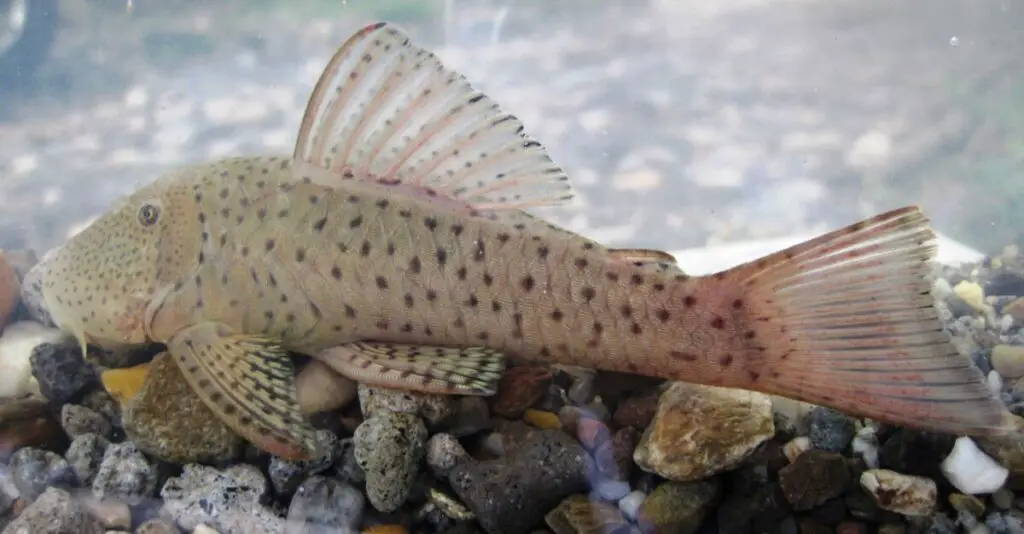
This species of fish dwells at the bottom of water bodies. They are capable of growing as long as seven inches and have an incredibly long life span, so your tank will be in good shape for years. The rubber lip pleco, also called Bulldog pleco, prefers slightly cooler temperatures below 78 degrees and are best suited for tanks of 20 gallons in size or higher. They feed on any sort of algae available to them.
As solitary species, they can live with other peaceful species without any issues. They focus on finding algae to eat at the bottom of the water. Like the bristlenose plecos, they would require an additional source of nutrients like plant-based foods and bloodworms since algae alone is not enough for their survival.
11. Sailfin Pleco (Pterygoplichthys gibbiceps)
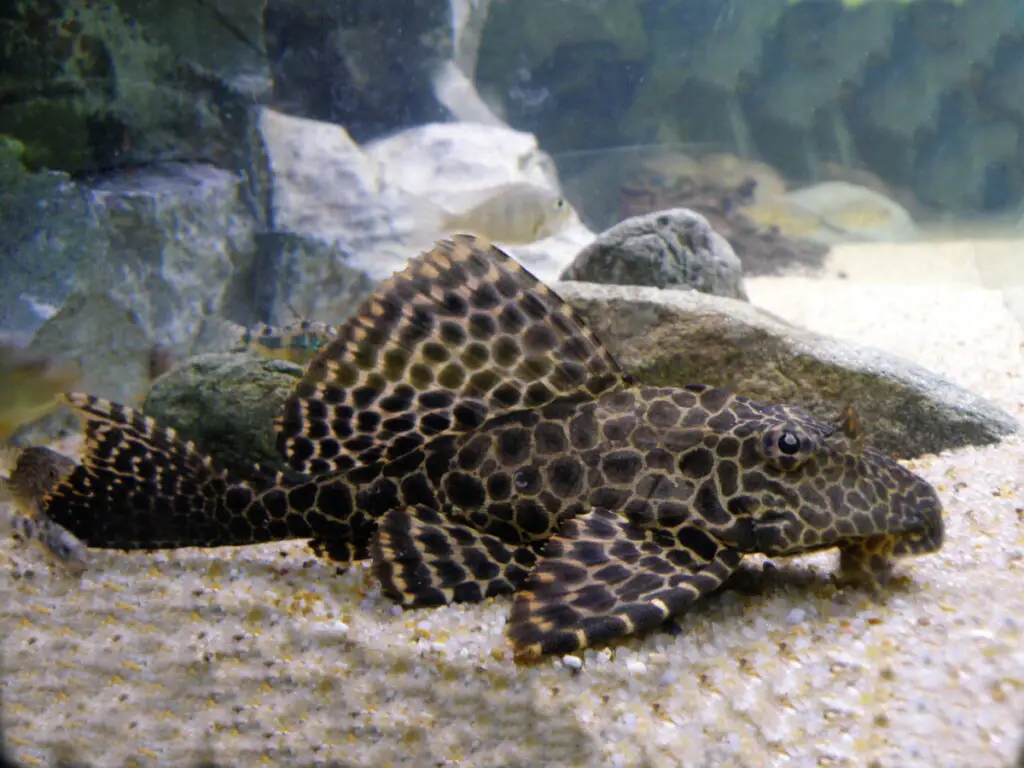
Sailfin pleco is a very big and powerful algae eater that is capable of growing as big as 13 inches in length. Because of their size, they can only serve for very large aquarium tanks of at least a 100-gallon size to give them enough swimming room. They have a highly adaptable ability in terms of temperature, but are a little strict on the pH, with a preferred range of 6.5-8.
Sailfin pleco have a high preference for algae as a choice of food and nutrients. So, if you have a massive tank with a variety and high amount of algal growth, this species should be at the top of your list.
12. Red Garrah (Garra rufa) – also known as the Doctor Fish
If you’ve ever wondered if there’s such a species that was born to eat algae, you just found it. The red garrah, or doctor fish, feeds on dead cells, detritus, biofilms and algae on any surface including rocks, plants, and driftwood. They have a wide range of nutritional choices. This means you can choose to supplement the algae with protein-rich foods, dry or frozen foods. They are about five inches in size which makes them suitable for small tanks except you prefer to have them in groups in which case you might need a larger tank of at least 39 gallons in size.
Despite their hardy nature and ability to survive in diverse environments, these species thrive and prefer cooler environments with temperature ranges between 57 and 68°F.
13. Reticulated Hillstream Loach (Sewellia lineolata)
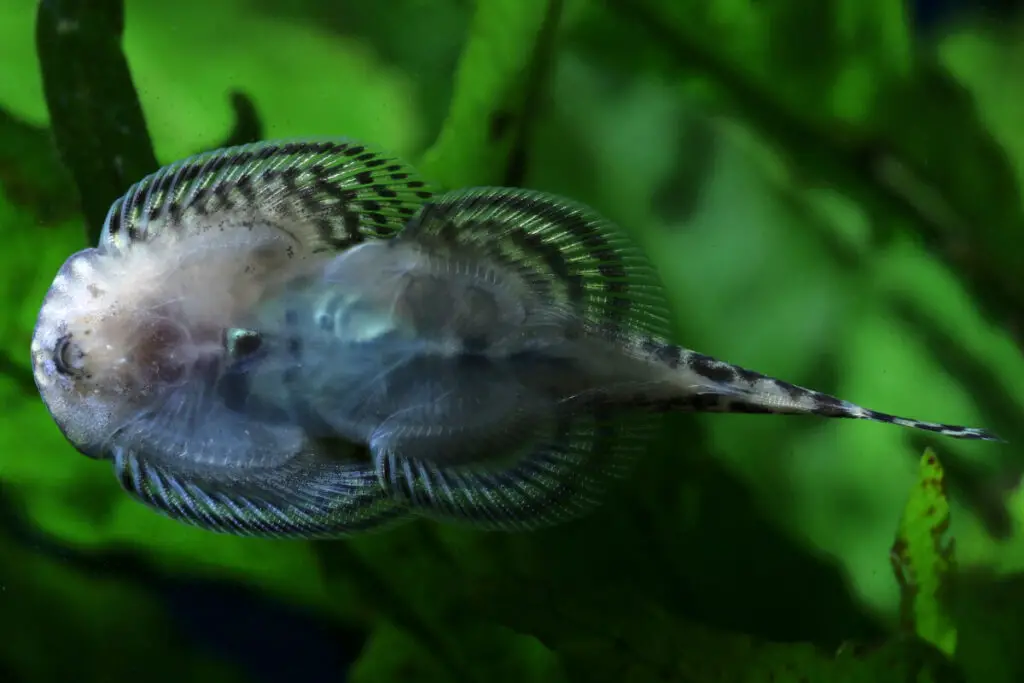
The loaches are cool looking, and uniquely flat algae eaters that grow up to three inches in sizes. They have strong gripping abilities that makes them remain attached to any large and flat surfaces with strong water flow (such as aquarium walls) and also makes them perfect for cleaning those surfaces. They feed on diatoms and other kinds of flat algae. With loaches, it’s best to get just one or at least three of them to even out any potential competition because they can be a bit territorial towards their own kind and if care is not taken, they might not last long enough. They thrive in cooler waters that have a stable pH. They are also voracious algae eaters but still require something other than algae as a supplement. Keep in mind that these fish are known to occasionally jump out of aquariums, so it is advisable to have a lid on yours.
14. Chaetostoma thomsoni
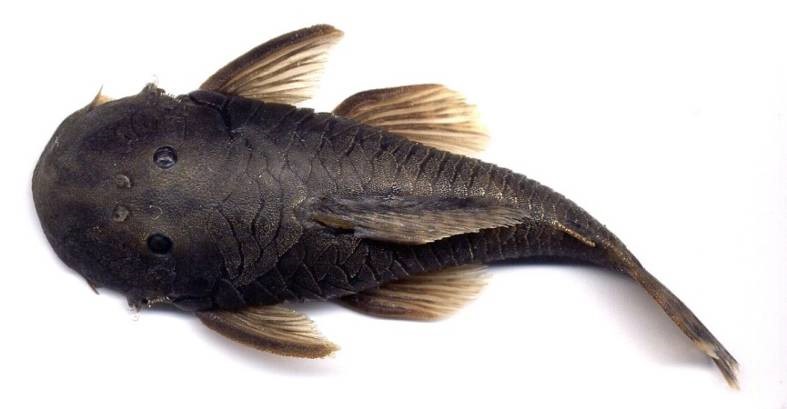
These are small sized peaceful algae eaters that usually don’t exceed five inches in size. They feed on diverse species of algae and other food including vegetables and bloodworms. They are somewhat timid, and hide in certain spots at the bottom of the aquarium or ponds. However, at night or in the absence of light, they are very effective tank cleaners that get rid of all algae present in the water. Note, these fish are often incorrectly sold as Chaetostoma thomasi, which is a species that doesn’t exist.
15. Platies (Xiphophorus spp.)
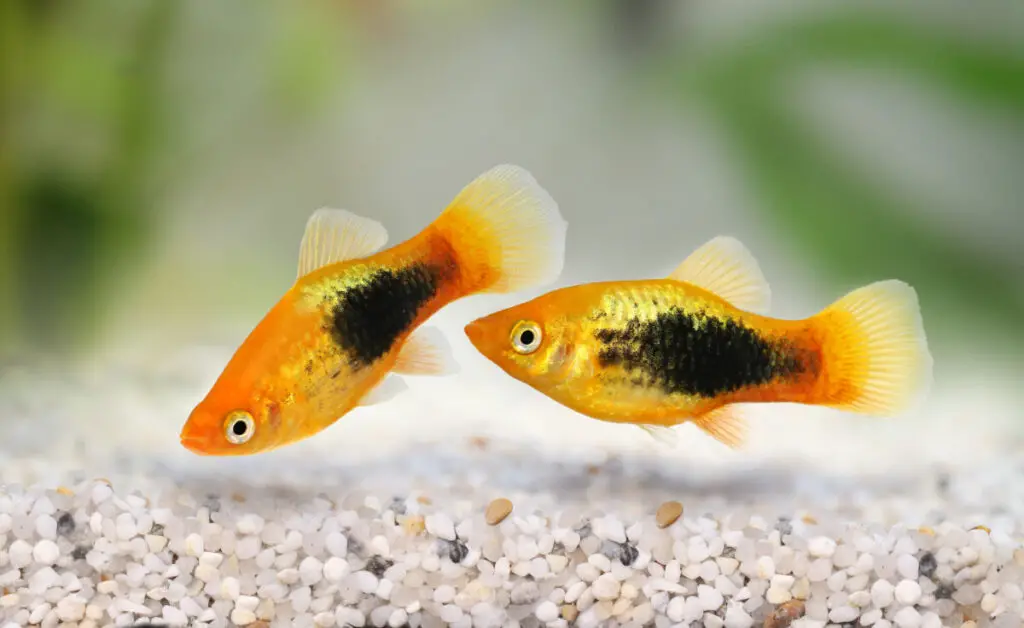
Platies are a group of colorful looking, hardy fish that live in freshwater and cohabit with aquarium plants. They can grow as big as three inches but some don’t exceed one inch in size. They are perfect for a 10-gallon aquarium or larger and thrive at room temperature or warmer.
They are omnivorous with large appetites, and will feed on any kind of algae in your freshwater aquarium. You can supplement them with other food nutrients to keep them healthy and at their best.
16. Guppies (Poecilia reticulata)
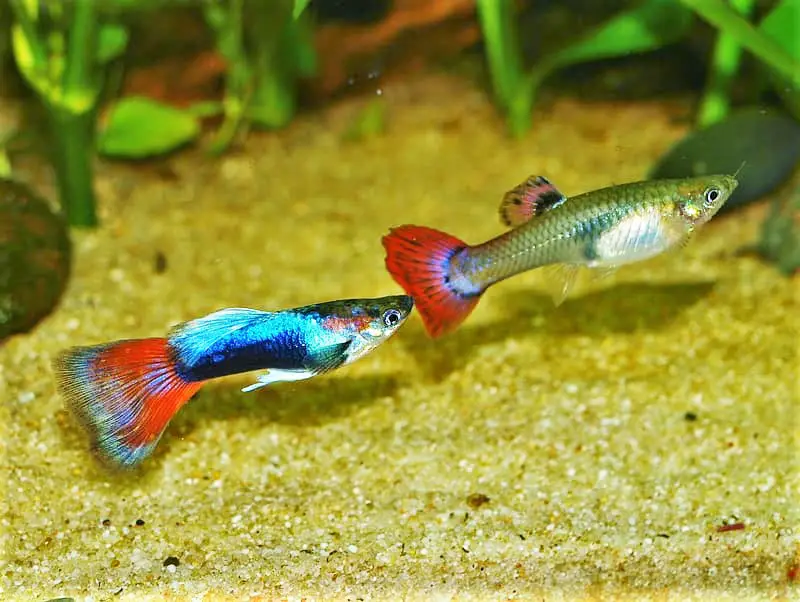
These are one of the most popular freshwater aquarium fish species that feed on algae. They are generally peaceful, thrive in warm conditions and can survive in a community tank with other fish species. The size of these fish is dependent on their gender as the females are bigger than the males, but they don’t exceed three inches in size.
They feed mainly on diatoms, algae remains, plant fragments and other sources. They would require other food supplements since feeding on only algae would not satisfy all the nutritional requirements.
17. Swordtail fish (Xiphophorus helleri)
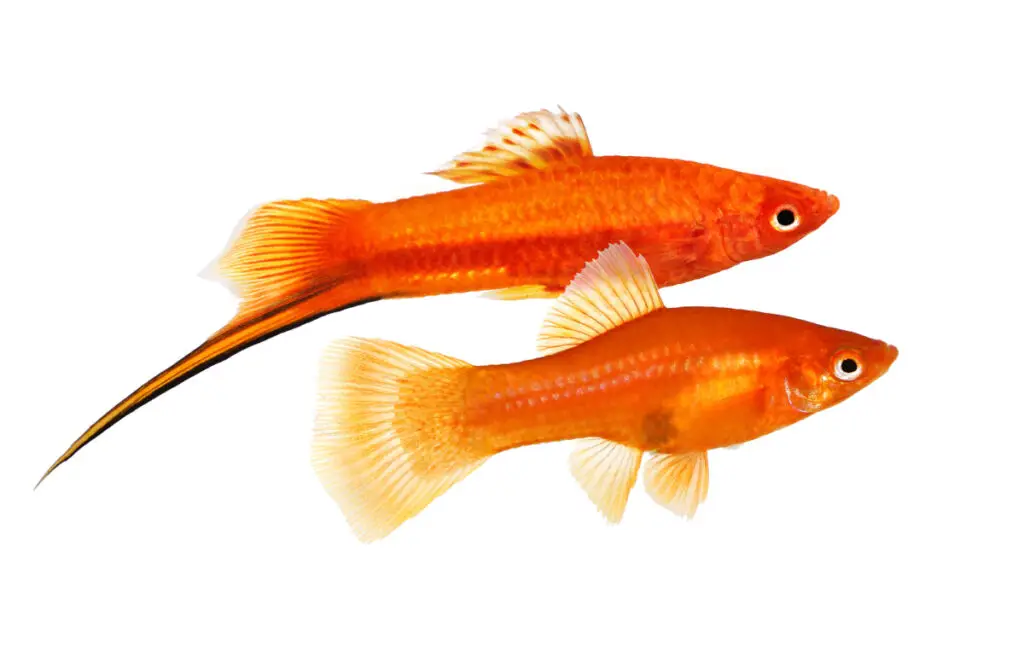
If you have a freshwater aquarium that contains a collection of peaceful members, swordtail fish will be a good addition. They are suitable for tanks as small as 15-gallon size and if you have a bigger aquarium, you should consider getting them in pairs of male and females to reduce aggressive behavior.
They are omnivorous and can eat virtually anything. Therefore, they’ll clear your tank of any kind of algae and you might not need to provide additional feed supplements.
18. Cambodian logsucker (Garra cambodgiensis)

The Cambodian logsucker, also known as black band garra, is often confused with Siamese algae eaters because of the similarities in their appearance. This species of fish feed on fresh fruits and vegetables, meaty foods, and different kinds of algae. To ensure adequate living conditions for the fish, the water conditions should be maintained at stable conditions and the aquarium should have a lid because this group of fish are known to climb glass surfaces.
19. Flying fox (Epalzeorhynchos kalopterus)
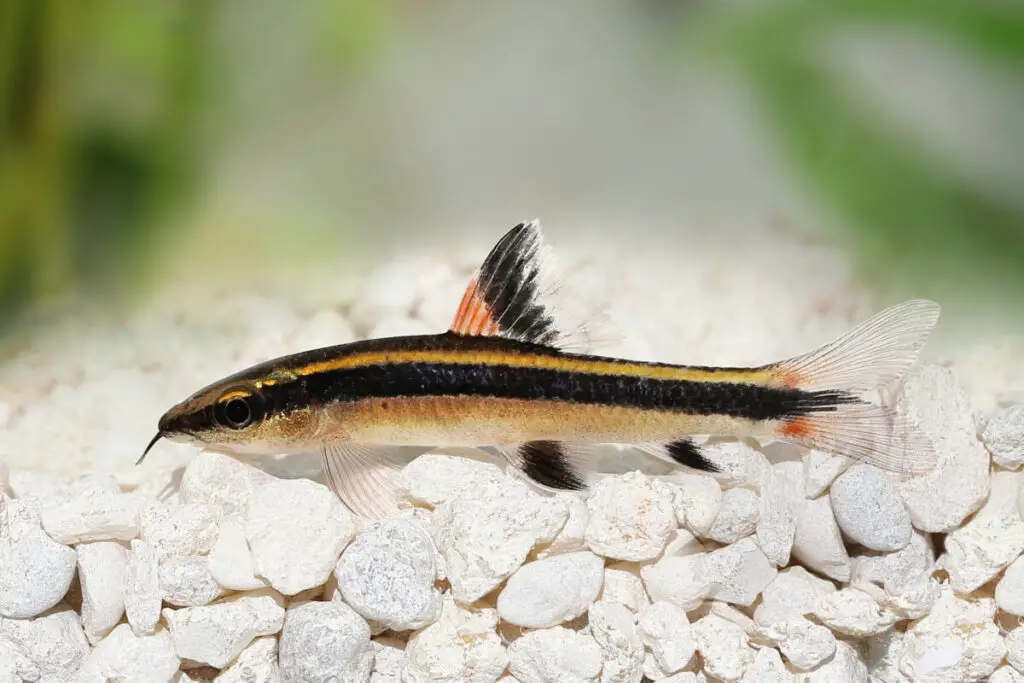
The flying fox is a freshwater fish that is especially known to eat green algae, and to avoid red algae. Like the Cambodian logsucker, it can be mistaken for a Siamese algae eater. It is capable of growing up to six inches and is typically ideal for a minimum tank size of 40 gallons.
Even though flying foxes are mainly algae eaters, you can supplement the feed with vegetables like spinach and zucchini.
20. Mystery Snail also known as Mystery Apple Snail (Pomacea bridgesii)
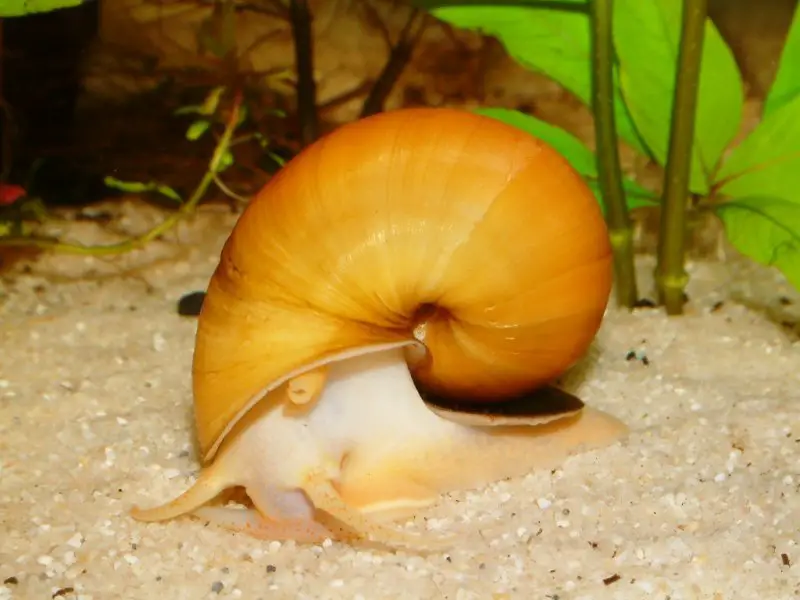
These invertebrates are characterized by their sudden growth spurts. They are usually quite small at the juvenile stage and can grow up to two inches in diameter over a short period of time. They do a great job of clearing any environment of algae and also feed on some aquarium plants. So, if you have plants in your freshwater aquarium, this isn’t the best option for you.
21. Ramshorn Snail (Planorbidae family)
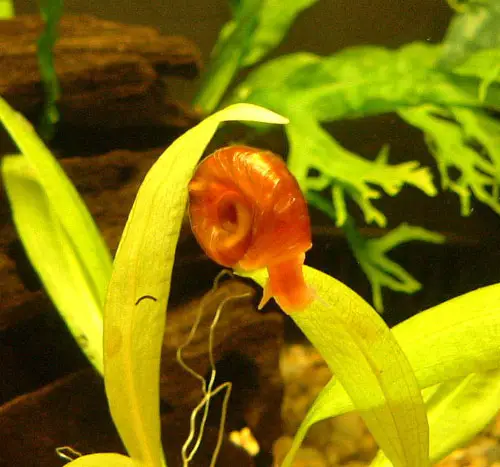
Ramshorn snails are among the best freshwater algae-eating snails around. When it comes to cleaning your aquarium from algae and other particles like debris and dead plants, they are not at all picky and very efficient in getting rid of these materials. One limitation to them is their potential to breed in numbers that are almost beyond control, so you might have to find a means to cut their numbers down.
22. Rabbit Snail (Tylomelania spp.)
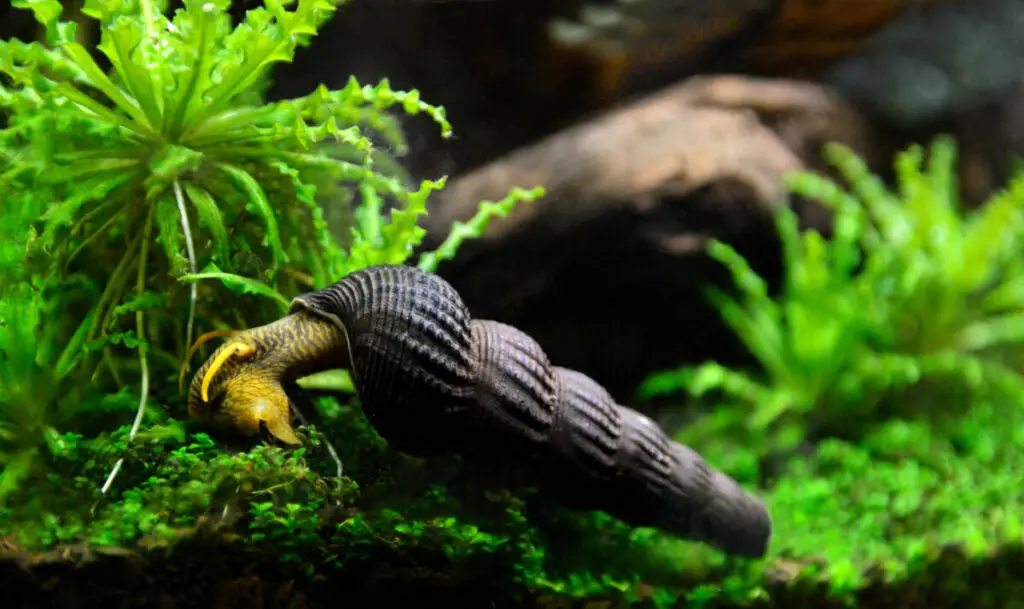
The rabbit snails are one of the best algae eaters around. They can grow as long as three inches and are very active in water which makes them interesting to watch. They exist in varying colors, all of which are enthusiastic algae eaters. They feed on rottened plant matter, and occasionally, soft plant leaves, but they are still suitable for a planted aquarium. You can prevent them from indulging in the aquarium plants by filling them up with vegetables and some sinking wafers.
23. Nerite snails (Neritina natalensis)
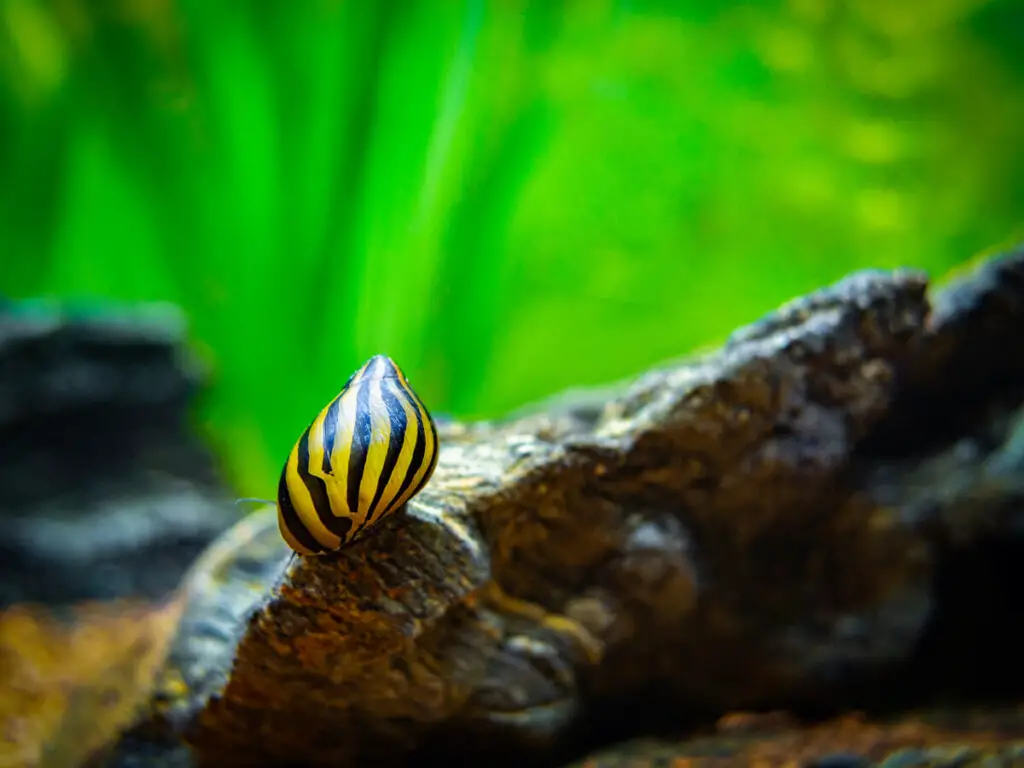
These are one of the most popular choices when considering algae eating snails. They have large appetites and a hardy nature which make them an interesting choice for many aquarium keepers. They survive comfortably in both freshwater and saltwater, but can only breed in the presence of salt. This means in your freshwater aquarium, you don’t have to worry about the nerite snails breeding in numbers that may become a nuisance to you.
Nerite snails are very effective algae eaters, they are safe for planted aquariums, and this makes them a great choice if you have plants to protect.
24. Malaysian Trumpet Snail (Melanoides tuberculata)
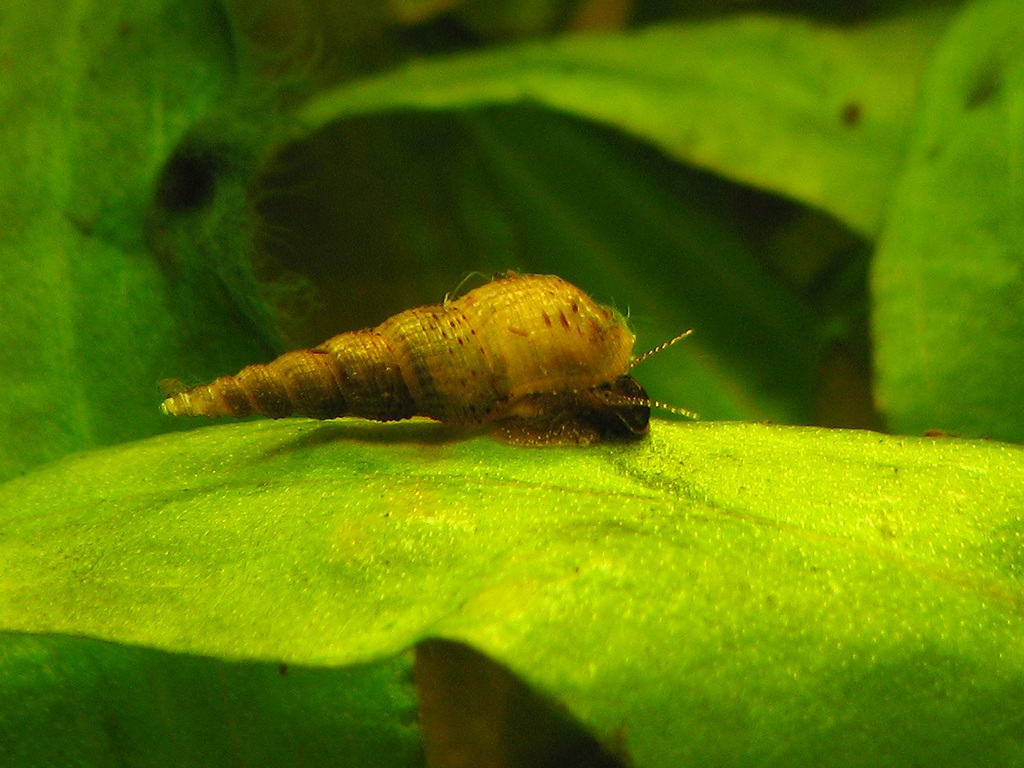
The Malaysian trumpet snails are very small invertebrates that make great eaters for some good reasons. They feed on debris under and on the surface of water which means they can find and eat hidden algae patches a lot easier than other algae eaters. They also do this digging and feeding without damaging or harming plants in their way, and their digging tends to benefit plant growth by aerating the substrate. They usually don’t exceed three inches in size which makes them suitable for both small and large tank aquariums.
25. Amano shrimp (Caridina multidentata)
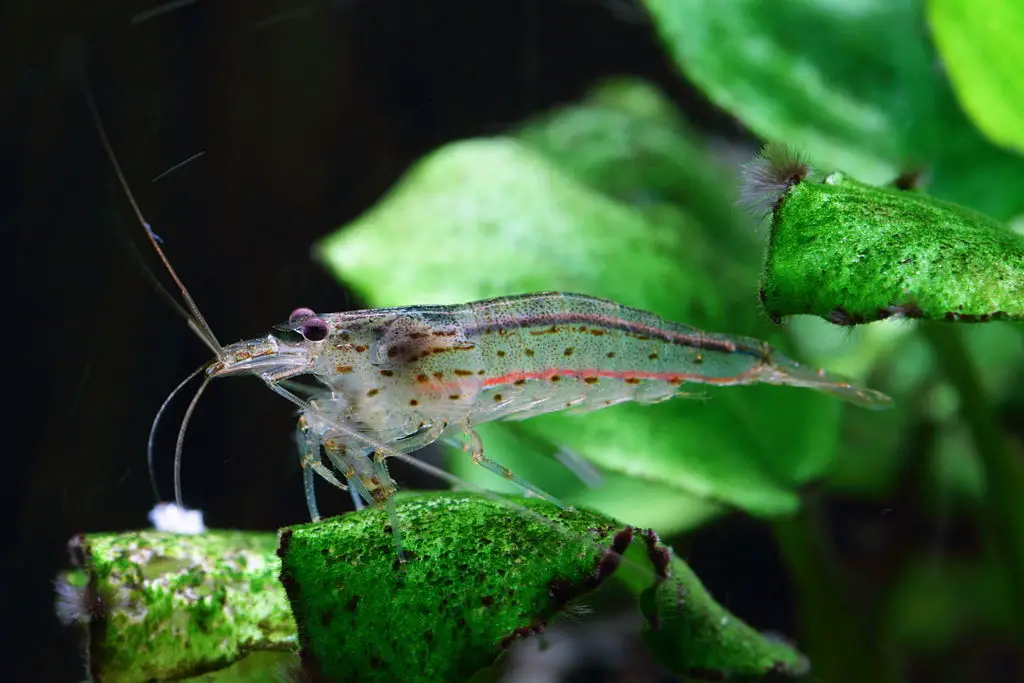
The amano shrimp are a species of freshwater shrimp that perform better in groups of five or more. They spend most of their time searching and feeding on algae and loose debris. At about two inches, they consume more algae than other small algae eaters and are great options for a community aquarium that has no predators.
26. Ghost shrimp (Palaemonetes paludosus)
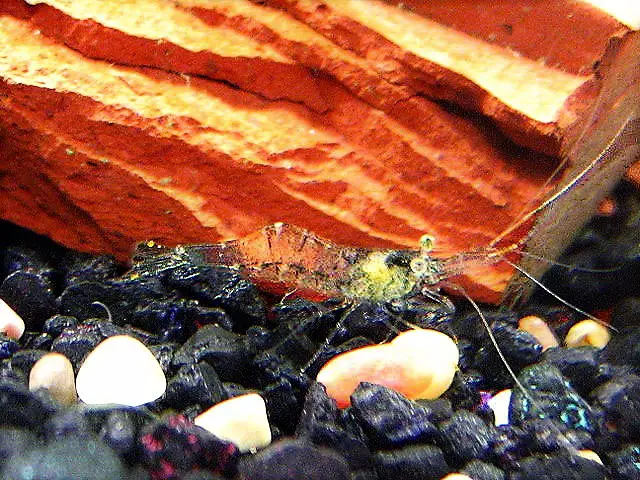
Ghost shrimp (AKA glass shrimp) are very affordable species of freshwater shrimp that serve as nutritious food for some fish. So, the first thing to note is that they can’t be in an aquarium with larger fish if you’re buying them to clean out algae. Their algae-eating efficiency isn’t as high as other shrimps or snail species, but they’re still good algae eaters, especially for planted aquariums.
27. Cherry shrimp (Neocaridina davidi)
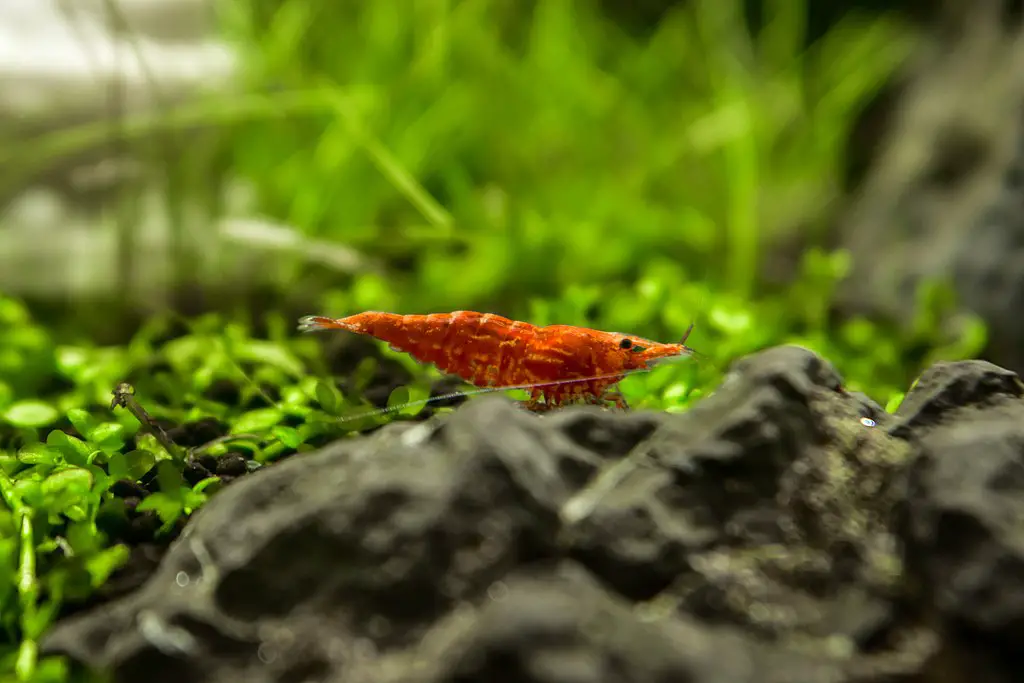
The cherry shrimp is a visually appealing freshwater algae-eating shrimp because of their sharp red appearance even though they exist in other bright colors. They enjoy feasting on algae and also have the ability to prevent further algal growth. They are natural scavengers, so they also take care of excess flakes or pellets that may fall to the bottom of the tank. They are perfect for planted aquariums and will do just fine as long as there are no predators in the tank.
28. Cardinal Sulawesi shrimp (Caridina dennerli)
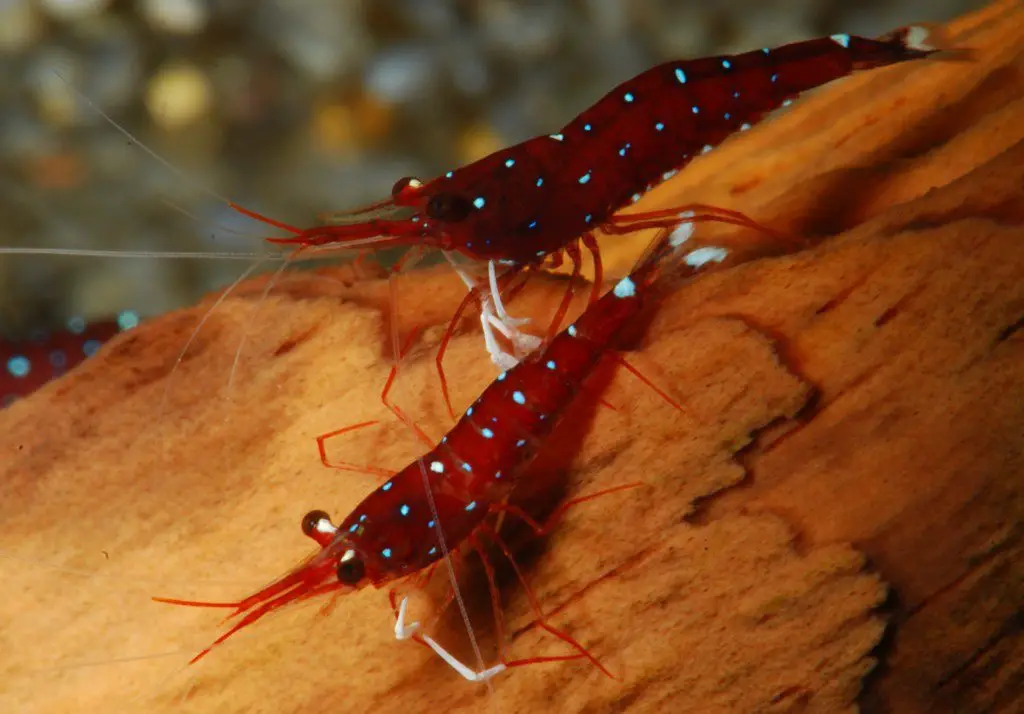
Cardinal Sulawesi shrimp are more colorful freshwater shrimp species compared to the cherry shrimps, and they typically don’t exceed an inch in size. They thrive in warmer temperatures and in a pH that is slightly basic (8). They feed on all soft aquatic leafless plants including filamentous algae which makes them a great choice for algae management. This also means that if at all there’ll be food supplementation, you’ll only need to do that occasionally.
29. Bamboo Shrimp (Atyopsis moluccensis)
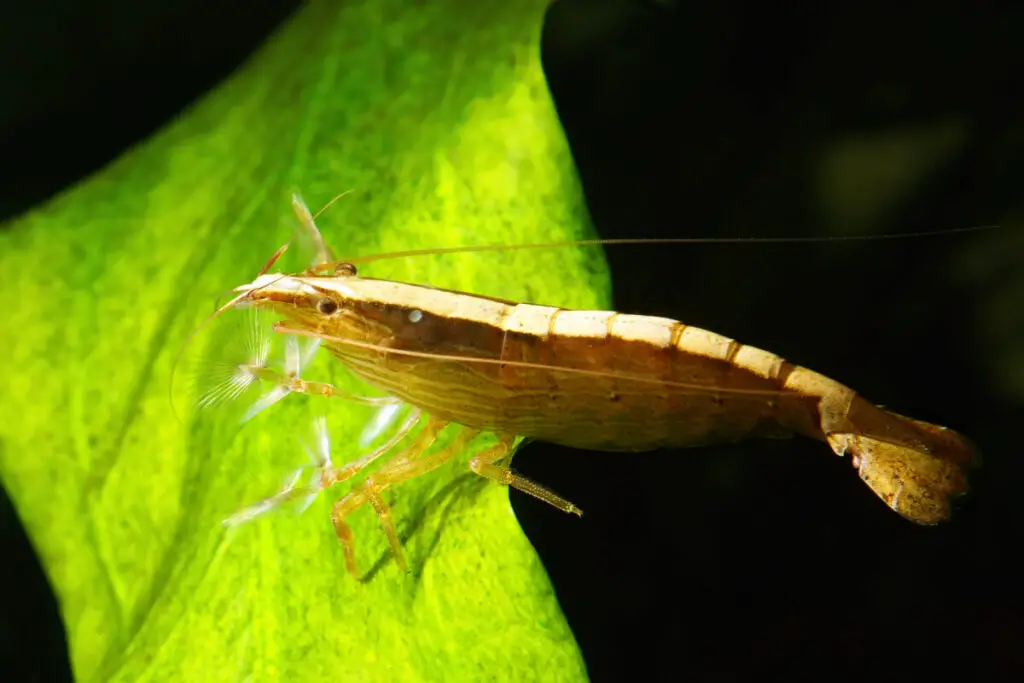
The bamboo shrimp are a relatively larger species of freshwater algae-eating shrimps available. They require larger habitats to survive, so minimum tank size should be about 20 gallons if you’re considering just one of these. If you want to have them in groups, then a larger tank is required.
They feed primarily on algae and plant matter. Chances are they won’t be needing any form of supplement from your end.
30. Bee shrimp (Caridina cantonensis)
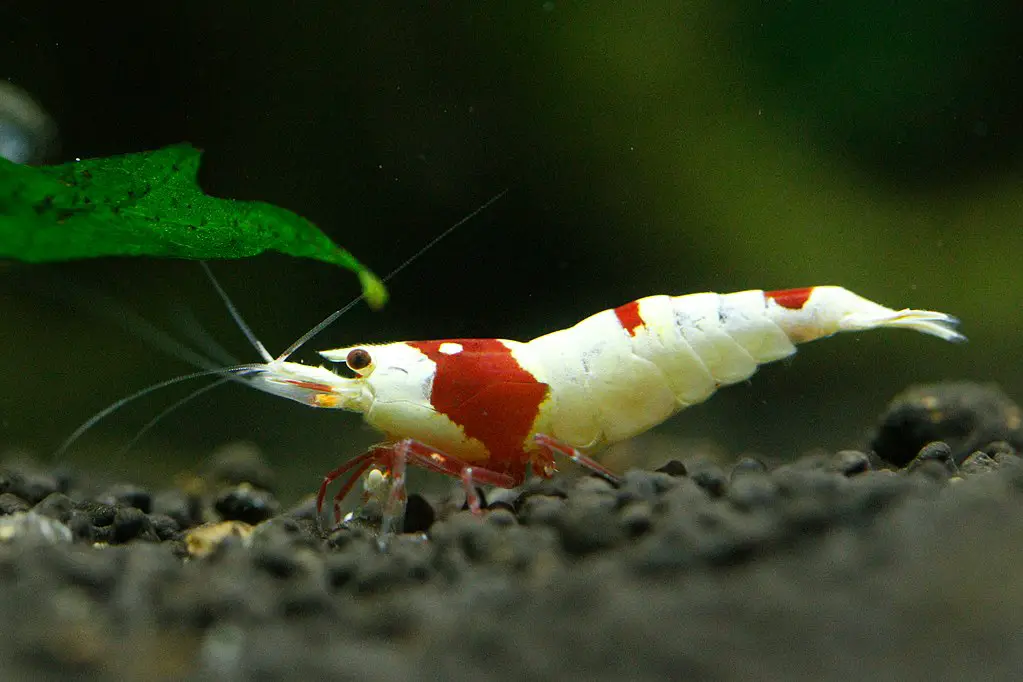
These are small freshwater shrimps that are natural scavengers and feed on decayed vegetation and algae. They don’t have very large appetites, they would only be suitable for smaller tanks or in groups of five or more. The bee shrimp is also ideal for planted aquariums; it won’t destroy the plants and it can use them as hiding spots. You would also need other feed supplements to keep it well nourished.
Which algae eaters are best for cold water?
The reed garrah, rubber lip pleco, and bristlenose plecos, are some of the best algae eaters for cold water due to their ability to survive at lower temperatures.
Which algae eaters are best for a planted tank?
These algae eaters are especially ideal for planted aquariums: Siamese algae eaters, otocinclus catfish, nerite snails, rabbit snails (provided they are properly fed), bee shrimps, Malaysian Trumpet snails, ghost shrimps, bristlenose plecos and cherry shrimps.
Which algae eaters are best for ponds?
Platies, flying foxes, common pleco, mollies, guppies, whiptail catfish, American flagfish, and other algae eaters suitable for planted aquariums are the best for ponds. They will not only take care of algae in your pond but also remove other debris formed from plants or worms. You should also look out for cohabitation behavior of the algae eaters and the conditions of your pond before making a final decision.
Which are the small algae eating fish?
Otocinclus catfish, bristlenose plecos, and American flagfish are some of the smallest algae-eating fish on this list with a maximum size of about 2 inches.
Best algae eaters for a small tank – 10, 15 and 55 gallon tank
For 10 to 15 gallon tanks, consider the small algae-eating fish mentioned above, the mystery snail, and almost all the mentioned shrimps. They have small sizes that fit well into small tanks.
For a 55 gallon tank, you can go for either smaller species in groups like the otocinclus and the twig catfish, or relatively larger species like the Chinese or Siamese algae eaters.
Final thoughts on the best algae eaters for a freshwater aquarium
This article discussed 32 best algae eaters and some factors to consider before investing in any of them. When you decide to own a freshwater aquarium, it’s almost automatic to start considering what species of algae eaters will keep you company and keep the aquarium clean.
Algae eaters are a smart investment that maintain the quality and appearance of the freshwater, reduce the work of cleaning your aquarium, and also reduce the strain on your filtration system when you change the water.

